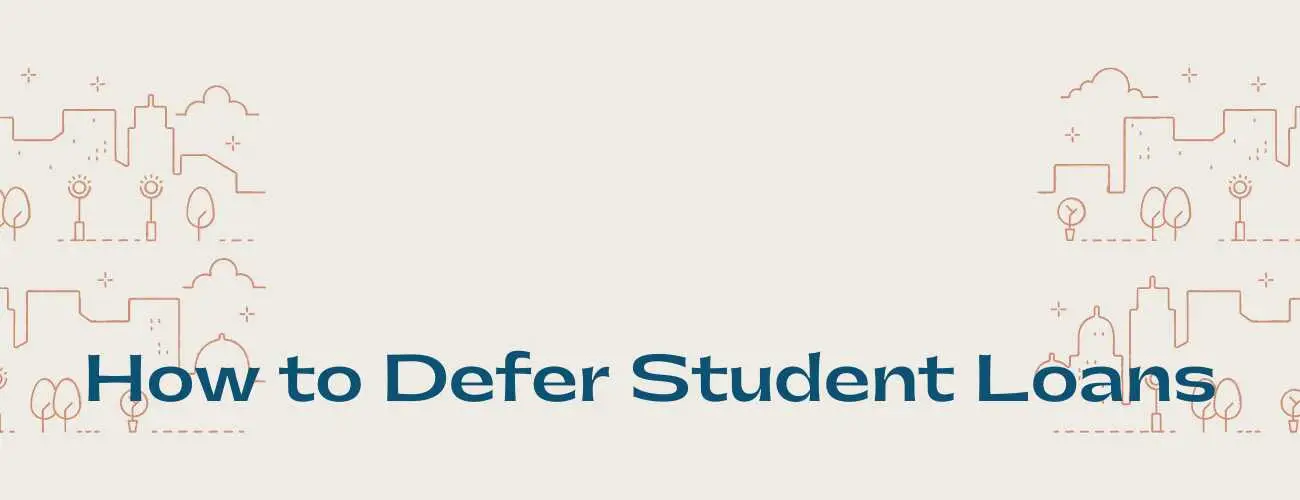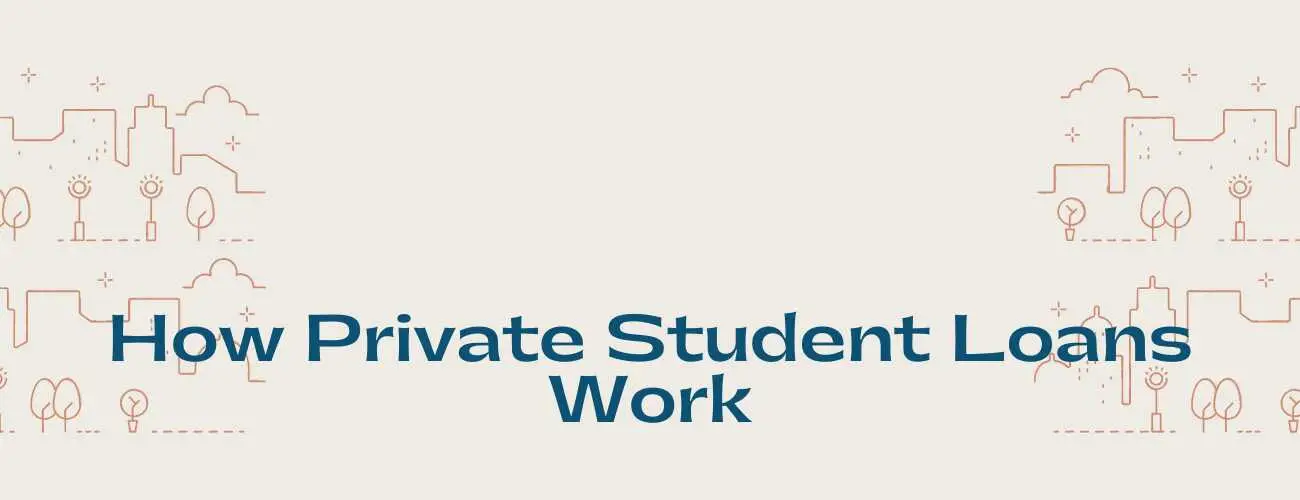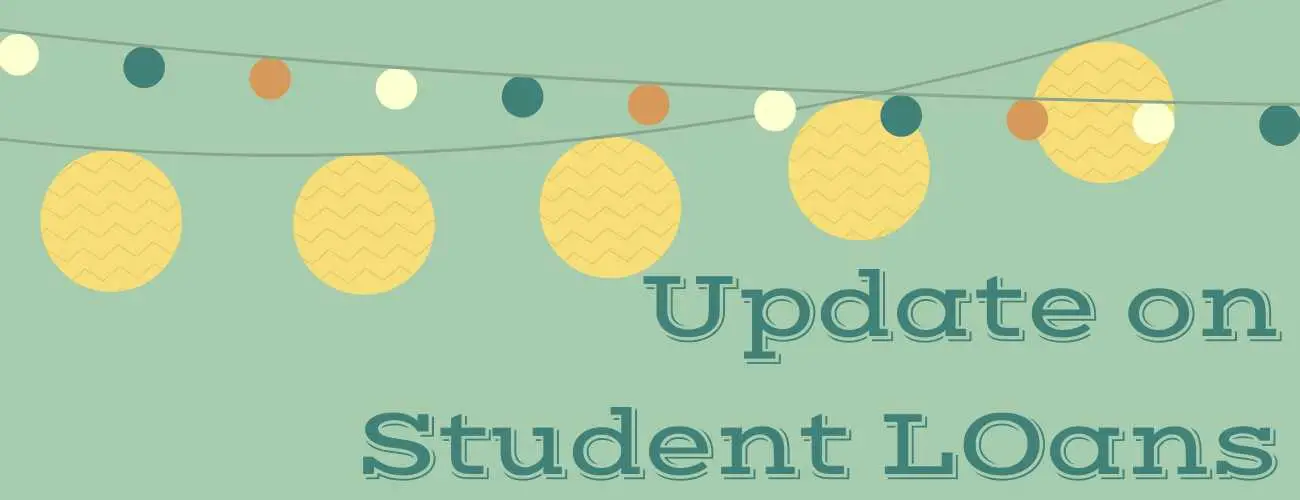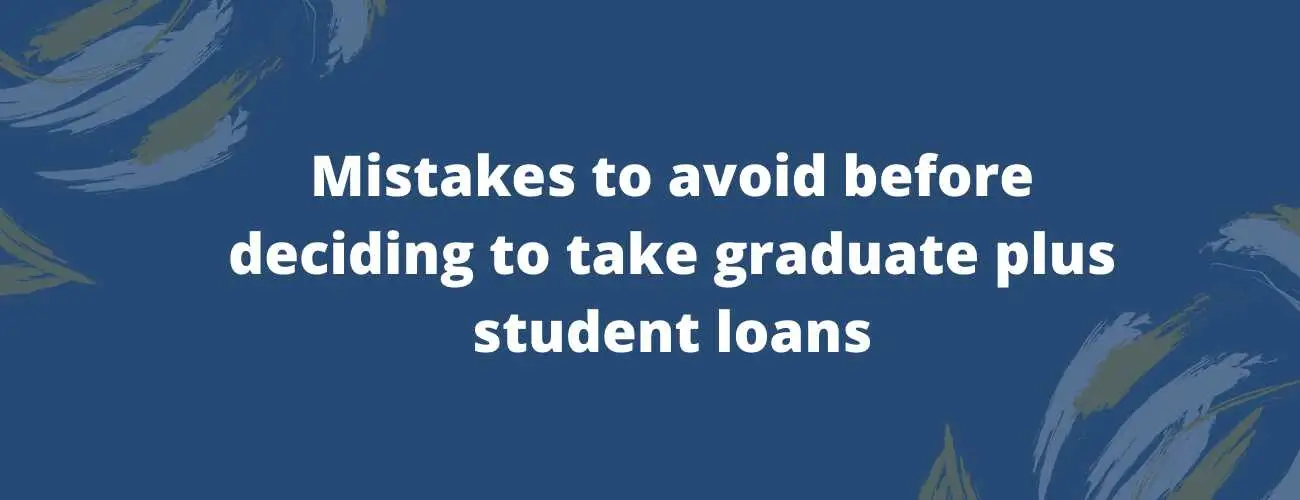PROSPER Act - Impact on student loans
Prosper Act as the name itself suggests aims at Promoting Real Opportunity, Success and Prosperity through Educational Reform. This article discusses the advantages, disadvantages and outcomes of PROSPER Act for student loans.
Updated by Theres Ann on 20th November 2019
Promoting Real Opportunity, Success and Prosperity through Education Reform is the full form of the PROSPER Act. It is a bill that will put an end to the Public Service Loan Forgiveness Program.
The Public Service Loan Forgiveness Program (PSLF) was introduced by George W Bush in 2007. It allows complete loan forgiveness for employees working in the public sector. Members of certain non-profit organizations also receive benefits from this program. As PSLF began only in 2007, the benefits of the program began to be received only lately.
To receive PSLF, the employee has to work either in Federal, State or Local Government, Non-Profit Organization (501), or in Non-Profit Organization in Public Service. The Prosper Act would eliminate the benefits of PSLF for new borrowers starting in 2018. This program received nearly 25,683 applications in 2012, which increased to 669,426 in 2017.
Although approximately 33 million Americans are eligible for loan forgiveness, only a small percentage of them are aware of the program.
List of Contents
-
How does the PROSPER Act increase the duration of Student Loan Repayment?
-
How will the act make you pay more and longer for your education?
-
How would the act affect the graduate or professional students
Income-Driven Repayments are changed by PROSPER
The PROSPER Act does not only end Public Service Loan Forgiveness, but it also removes other beneficial aspects of student loan repayment. Out of the six student loan repayment plans, only four are income-driven. The PROSPER Act consolidates them into two main repayment programs, namely -
1 - Ten Year Standard Repayment - All student loans regardless of the balance are put into standard 10-year repayment plans, and this results in a very high payment.
2 - Income-Based Repayment - An existing payment plan that bases payment on 15% of your discretionary income falls under income-based repayment. This means a very high payment for borrowers with high income. It also ensures an increased payment for low-income borrowers who take advantage of the PAYE or REPAYE payment plan which offers a payment of 10% of your discretionary income.
This change of the repayment plan is beneficial only for private lenders. PROSPER will be beneficial for For-Profit Colleges once it becomes a law. For-Profit Colleges cannot receive more than 90% of revenue from Title IV Funds.
These funds are essential for federal student loans. It disallows the For-Profit Colleges from being propped up by federal taxpayer dollars. The 90/10 rule helps to make for-profit colleges competitive, and offer an education that makes the student want to attend their college.
The PROSPER Act removes 90/10 rule for For-Profit Colleges and puts the burden on the taxpayers. The Gainful Employment Regulation for for-profit college is removed by PROSPER and this does not allow students to be eligible for federal student aid.
This would significantly reduce borrower's interest, through loan forgiveness, flexible repayment plans, and regulations for for-profit colleges and aims at protecting student loan borrowers.
The effects of this act can be difficult as you will be paying back your student loans until you are dead.
There is no maximum repayment period for this act. It would cap the federal borrowing limit at $235,500 for medical professionals. For Grad school programs, the lower limit would be $150,000. These loans are called Federal One Loans and the borrowers are asked to pay 15% of their discretionary income, till they choose to make level payments over a set number of years.
The standard repayment is for 10 years. If you ever fail to signup for income-driven paperwork on time, then this is what you get signed up for default. The Federal Plus Program agrees for the calculation of a principal plus interest of doing for a 10-year repayment plan. This dollar amount should be paid back before your loans are forgiven.
The longest repayment term for forgiveness is 25 years of the Income-Based Repayment or the REPAYE plan.
How does the PROSPER Act increase the duration of Student Loan Repayment?
Pell Grant won’t change but would come with a bonus
If in case you receive the Pell Grant, your award would remain the same. In the requirement of more money, you’ll have to take 15 credits per semester.
The maximum Pell Grant amount will be received based on the enrollment levels. The current maximum award of the Pell Grant is $5,920. Students who enroll in 15 credits per year in a semester will be able to get this benefit. This should encourage students to take more credits and graduate earlier.
Higher credits mean higher tuition. Higher credits would indirectly mean more loans for low-income students. Granting students for full-time enrollment is a good thing. But if the student debt levels increase, then the negative impact of it would outweigh the benefits.
Larger loans are granted for undergraduates but are limited for graduates and parents
An increase in graduate federal loan limits, that is a rise from $5,500 to $7,500 are seen by dependent undergraduate borrowers. As opposed to the current limit, graduate loans will see their limits set at $28,500. The loan would be set at a flat rate of $12,500, for parents, which is a cost of attendance wherever their child attends the college. The proposed limits can increase the likelihood of taking out additional loans from a private lender, to cover the unmet need.
As borrowers are turning into private lenders, then the borrowers would be forced to repay two entities including the direct loans of the federal government and also a private lending entity.
Student aid feels more like a job
Additional investments in programs designed to increase connections between job skills and a college degree. By phasing out graduate student eligibility, the available funds for the undergraduates will be increased by the legislation.
Apprentice Grants Program that focuses on business to institution partnerships and grants access to Pell Grants for students pursuing short-term, certificate and vocational programs. The way aid is delivered to students will also be changed by the PROSPER Act.
Rather than the entire aid amount received at once at the beginning of the year, aid will be distributed as grants and loans in bi-weekly installments.
Bi-weekly installments ensure enough amount to stay enrolled throughout the semester. This helps in spending the money wisely, decreasing work-hours and focusing on the studies.
Availability of fewer loan repayment options
Prosper streamlines the repayment options to two. Standard 10-year repayment is the first option. Income-Driven repayment is the second option. The federal government will receive almost the same amount of money, regardless of the selected plan.
The students can then choose to repay their loans through a fixed 10-year pay or a payment of 15% of the discretionary income.
There will be fewer benefits to enter into the public service
Public service careers will revert to become an altruistic career choice. This is because, in the previous years, students who went into public service jobs or K-12 teaching jobs usually received loan forgiveness as part of their service to the public.
The PROSPER act eliminates all public service loan forgiveness and priority targeted grant programs. All public service loan forgiveness programs and priority targeted grant programs are proposed to be eliminated by the PROSPER Act. The end of public service loan forgiveness will be changed by the supply of workers in public service jobs.
However, there are several benefits that students will receive after the PROSPER Act is implemented. The application to the Free Application for Federal Student Aid (FAFSA), will be simplified. Access to a mobile FAFSA Application will reduce the barriers to applying.
Access to additional work-study aid and larger Pell Grants will reduce barriers for low-income student enrollment. Financial stress can also be reduced by allowing student loan borrowers to access income-based repayment. By removing key loan forgiveness and forbearance, this legislation signals to students that the cost of higher education will be their long-term responsibility.
As per the current law, undergraduate students receive subsidized loans, unsubsidized loans or both. Based on financial needs and the carrying of valuable benefits, subsidized loans are allocated on a sliding scale.
The times during which the students have to pay the loan include the duration for which the student is in school, six months after they leave the school, during active duty military service and up to three years of unemployment or economic hardship.
The one characteristic of the act is that it replaces existing loans with a new one loan program that grants only unsubsidized loans. With three-quarters of undergraduate Stafford Loan taking subsidized and unsubsidized loans, it is necessary to consider whether student loan subsidies could be designed to have a greater impact on affordability.
Valuable loan subsidies for undergraduates with financial needs without investing $27 billion dollars, saved back into students. The cost of student loans will be increased by thousands of dollars, over the years for a large number of undergraduates who receive the loans each year.
Advantages of PROSPER ACT
During periods of unemployment and economic hardship, interest-free deferments are granted to the Pell Grant recipients, to help the students repay the loan. Pell Grant recipients would also be eligible for interest-free deferments on all their loans. The proposed loan would also have a fixed interest rate that reflects the government’s cost of borrowing.
It grants predictability to students and also ensures that the new loans are in step with the economy. Lower interest rate increases the affordability and encourages students to stay enrolled and complete.
An interest rate cap ensures that the interest rate on student loans will never be high. An interest rate guarantee assures borrowers that their rate in repayment will never be higher than the rate on new student loans.
Disadvantages of the PROSPER Act
-
The cost of Federal loans for borrowers would be increased. This would also increase the risk of private loan borrowing.
-
Changes to loan repayment would increase the simplification of the system but at the cost of raising monthly payments for all. This also increases the default and weakens the crucial safety net for lowest income borrowers.
-
Loan counseling and consumer information enhancements lead in the right direction. However more complete data are needed. Consumer testing will also be helpful for students and families to make the most out of it.
-
Discarding of reasonable accountability standards will result in unimaginable debt and more waste, along with fraud and abuse in higher education.
-
Narrowing the borrowing defense eligibility along with limiting of closed school discharge, and preemption of state consumer protections can harm student borrowers who attend low-quality or are even fraudulent for-profit colleges.
The act is supposed to change the way colleges are held accountable for the outcomes of their student loan borrowers. Because of the Act's changes to the repayment system, the effect of the accountability regime is uncertain. Currently, colleges are held accountable for their three-year cohort default rate.
Institutions with a higher rate of default three years after the borrowers enter the repayment period are ineligible to provide federal student loans. Based on data from a recent cohort, 10 schools were subject to the loss of eligibility. This metric is considered insufficient for accountability, as students can reduce or delay payments under forbearance.
After the passing of the act, the default rate measure would be replaced with a measure of loan repayment. There are three occasions wherein the borrower would be considered for a ‘Positive Repayment Status’. These three occasions include repayment of a loan in full, deferment or in less than 90 days if it is considered delinquent in the second fiscal year of repayment.
If any program has less than 45% of its borrowers in positive repayment status for three consecutive cohorts, then these programs are ineligible to provide student aid.
To understand the impact of the new accountability regime, evaluation of it should happen with other repayment options of the Prosper Act. This eliminates the possibility of $0 payments for financially stressed borrowers.
Borrowers are all required to make monthly payments of at least $25 or $5 if economic hardship due to unemployability or medical expenses. When the borrower’s plan is taken away, the individual’s ability to pay might also be taken away. However, there is still time to act.
Two popular strategies for federal student loan repayment are public service loan forgiveness and income-driven repayment plans. When the borrower’s plan is taken away, you might take away the individual’s ability to pay. There is definitely more time to act.
How will the act make you pay more and longer for your education?
Under the Federal Loan Program, there are myriad options to repay the loan. Most of these options were planned in order to ensure that student loan repayment is manageable and that it doesn’t become a burden for the rest of your life. It is necessary to understand the impact of the PROSPER Act on Underrepresented students in For-Profit Colleges.
Essential protections that were offered by the previous reforms over the previous decades for the financial benefits of the for-profit students would possibly be rolled back after the introduction of the PROSPER act. Essential measures including completion rates, student indebtedness, student loan delinquency, student loan default, ad public cost of for-profit institutional failure, less effective outcomes were visible in America’s for-profit institutions.
The differences that for-profit institutions have from non-profit institutions are as given below.
-
As in 2016, there were approximately 717,000 students in for-profit institutions.
-
46% of students enrolled in 4-year for-profit institutions were either Black or else Hispanic.
-
Graduation rates at 4-year for-profit colleges were lower than non-profit institutions
-
Less than one-fourth of students enrolled in the college in 2009, had completed their baccalaureate degree in 2015. It was for the same course and duration than 66% of students in non-profit universities and 59% of students in public universities completed a baccalaureate degree.
-
When 43% of the Black students completed their degrees from private non-profit universities in 2009 and 40% of students completed their degrees from public universities in 2009, only 15.5% of them could complete their degrees from for-profit universities. Same was the case for Hispanic students as well.
It is so essential to return to 85/15 rule to be placed under earlier authorizations. It is also required to restore restrictions on incentive payments in order to generate enrollments. The borrower defense rules and additional protections of loans against institutional fraud are added.
Income-contingent repayment plans are to be restored and new evidence-based plans are to be added to ease loan payment. Financial and other types of incentives are added to institutions to improve student completion.
How does the act impact the LGBTQ community?
The PROSPER Act is a bill to authorize and overhaul key elements of Higher Education. Some of the groups that openly oppose this act include Bipartisan Officials, Educational Leaders, Veteran Officials, and even the Pentagon.
The act would make college expensive for LGBTQ students.
Some of the methods that are currently used by colleges to make education affordable for students include internet subsidized student loans, income-driven repayment plans, and more. This act would cause the discontinuation of internet subsidized student loans and eliminate income-driven repayment plans.
These benefits had previously made the monthly loan payments more affordable. Consumer-Protections relating to for-profit institutions would also sometimes be weakened. All these factors will create a direct impact on the higher education of the members of the LGBTQ Community.
What does the survey say?
The US Transgender Survey has brought out conclusions that members of the LGBTQ community are three times more likely to live in poverty, compared to the rest of the US Population. Almost 38% of the survey respondents had a household income less than $25,000 annually. More than 50% of the respondents had no college degree.
Systemic Societal factors have generated barriers for Transgender Americans. Restructuring of repayment plans under this act will diminish accessibility to college for this population.
A path for religious freedom exemptions for some institutions will be created for some institutions.
The language of the PROSPER Act could circumvent some existing non-discrimination laws and policies. Certain religious institutions that are against the interests of the LGBTQ communities would be protected from punishment for acts. Legal clashes involving religiously affiliated institutions and their LGBTQ students would thus be created by the act.
It might discourage sexual assault and harassment on college campuses.
It allows educational institutions to set personal standards for a disciplinary proceeding that involves sexual misconduct. Thus the Act would possibly discourage the survivors of sexual assault to raise a complaint. This can seriously impact the LGBTQ communities.
Key issues that the act would address
A few key areas that the PROSPER Act would address are given below.
-
Abolishment of the Public Service Loan Forgiveness Program
-
Providence of benefits for For-Profit Schools including the elimination of 90/10 rule
-
Reduction of Federal One Repayment Options to Federal One Loan Program
-
Institution’s qualifications are gauged based on student loan repayments for programs
-
The process of FAFSA is further simplified
-
The Pell Grants are reauthorized through 2024
-
Updating of accreditation requirements which are focused on student outcomes
-
Distance learning programs are also entailed
-
TRIO based grants are made more competitive for first-time submitters
-
The Federal work-study program is reformed
-
Pell Grants are utilized for short-term work-force development programs
Reasons behind opposition against PROSPER Act by the Democrats and Higher Education Community
There are several reasons why the PROSPER Act is opposed by the Democrats and the Higher Education Community. A few of those reasons are given below.
-
Shrinking of Federal Loan Programs
-
Loss of Loan Forgiveness Programs
-
Lack of regulations on For-Profit institutions
-
Stricter measurements of graduate and student success
Impact of PROSPER on Grant Seeking
The first time TRIO applicants would find it easy to apply to fund for programs including Educational Opportunity Centers, Ronald E.Mcnair Post Baccalaureate Achievement, Student Support Services, Talent Search, Training Program for Federal TRIO Programs staff, Upward Bound, Upward Bound Math-Science, Veterans Upward Bound and more.
While first-time applicants are benefited by these changes, the competitions in the case of federal submissions would also increase. Furthermore, challenges are extended to those programs that demonstrate success through data.
How would the act impact graduate or professional students?
The biggest impact of the act would for the current and future students who are interested in earning Public Service Loan Forgiveness for their work in the public sector. Though the bill does not eliminate the program, the eligibility is made essentially impossible for new borrowers due to the elimination of Federal Direct Loans and repayment plans eligible for PSLF.
Some of the other programs that graduate and professional students rely on are also removed by the PROSPER. As a result, most students will be compelled to seek help from private sector lenders. This will harm the borrowers because private loans lack the borrower protections for federal loans.
The current income-driven repayment plans have a provision of loan cancellation available in twenty or twenty-five years. This provision would be taken away by the Act.
Recruitment and retaining of qualified Police Officers, Nurses, Attorneys, Teachers, Fire-Fighters and other vital public sector employees would be affected due to the discontinuation of the Public Service Loan Forgiveness Program (PSLF).



93.jpg)


28.jpg)
